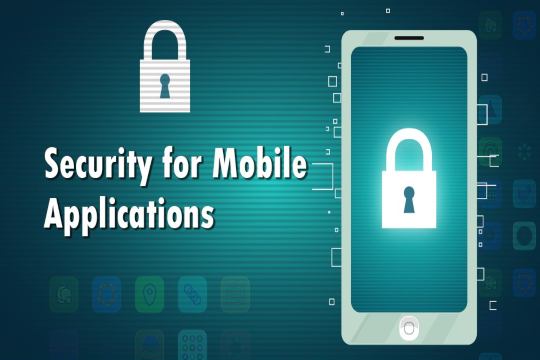With the growing risk of data breach, it is becoming very important to ensure security for app users. However, it’s not that easy. Ensuring a mobile app’s security is one of the biggest hurdles faced by mobile app developers. Every app developer wants to create a mobile app that can provide a safe and enjoyable user experience.
Developers aim to reduce any risks of data leakage, authentication, encryption failure, and insecure data storage. In order to make sure that you can develop a risk-free and secure mobile app you will have to follow certain steps that have been tested for effectiveness.
Working close with designers and developers, I have managed to round up ‘5 key steps’ that you can follow to develop a secure mobile app. Read on to find out how you can own a risk-free mobile app.
5 Steps for Building a Secure Mobile App

Make Use of Encryption
Building customer trust is a crucial step for building your brand’s identity and for successful mobile app marketing. If for some reason your visitors doubt your app, they will probably consider it as a security threat. For example, when you ask for a user’s email or phone number, they will hesitate in giving you this personal information.
This gets worse if you ask for very sensitive information, such as credit card details. Users will automatically be unsure of the confidentiality of their information. In order to solve the problem of customer trust, experienced mobile application development agencies use ‘Encryption’.
Encryption is considered as one of the best ways to protect sensitive information. Encryption is the process of encoding sensitive information in such a way that only authorized parties can access it.
Further, encryption can be used to protect the database, files on servers, hard drives, email messages, and other such sensitive transmission and data storage points. The number one most important thing to remember about encryption is to always store the keys in secure containers where only you can access it (never store them on a device).
For better application security, make sure that you are using the best encryption tools and techniques.
Inform users about suspicious sign-ins
Mobile app development companies can take another very easy approach to improve mobile app security. ‘Informing users about suspicious sign-ins’.
Facebook, Instagram, and a number of other social media giants are already using this strategy to protect customer data and ensure maximum security. If someone tries to sign in to the user’s account on an unknown device or by using a suspicious IP address, you can automatically alert the user.
You can inform users about suspicious sign-ins on their registered email address or phone number. Furthermore, you can also enable the user to verify the activity. If someone else tried to access the prospect’s account using their credentials, then the prospect can log themselves out from all devices and change their credentials.
Secure your source code
A ‘source code’ is the initial layer of coding of any program. The source code can be modified by a program, and once executed, it is converted to ‘object code’ or in other words a machine code. In simple words, source code is the very beginning of your program and what it will turn out to be.
However, over the past few years a number of source codes were discovered that were vulnerable to outside attack. This was due to outdated methods that fail to meet the security requirements for the present era.
Thankfully there are a number of easy to implement measures that you can take to secure the source code of your mobile app. I’ve rounded a few of them below:
1. Restrict access
The simplest way to secure your mobile app is by restricting the team members that have access to it. Pass your code through two-factor authentication to make sure that no one suspicious has access to the source code.
2. Copyright and patents
Make sure that all your software and coding is protected by copyright law and any necessary patents.
3. Encryption and monitoring
Make sure that your source code has the ability to encrypt relevant data in transit as well as rest.
Be Very Careful with API’s
An API (Application Programming Interface), is an important part of backend development which allows applications to talk to each other. But, they can pose to be a security headache because exposed API’s can allow unauthorized access to your code and manipulate your data.
Think like an attacker and Test & Retest
When you are writing your code, whether it’s for a website, web app, or a mobile app, always think like an attacker. Think of ways that you as an attacker could exploit the code.
Something that might seem like a minor issue that could be neglected, might actually prove to be a vulnerability that a hacker could use.
Instead of just reviewing the obvious flaws, find ways to break your app. This is a sure way to limit the vulnerability of your mobile app.
Wrapping Up
With the growing risks of cyber-security, it’s becoming imperative that we secure our data with the best tools and outstanding security practices. A mobile apps company must try to overcome the threats posed by hackers and external data breaches.
By taking the measures that I’ve mentioned above, mobile app developers can effectively protect their mobile apps and make them more secure.
Read Also:
- Website vs App: What Is the Best Mobile Option for eCommerce Businesses
- How Does Restaurant Mobile Application Drive Your Food Business?
- 9 Mobile Application Development Tips For Beginners
Author Bio: Khloe Hunter is a Digital Marketing Executive for Appverticals an expert mobile apps company. She has expert writing skills and extensive experience in blogging as well as marketing. She loves to write about new & upcoming technology, mobile apps, web apps, marketing, and business.














